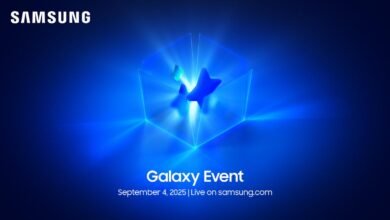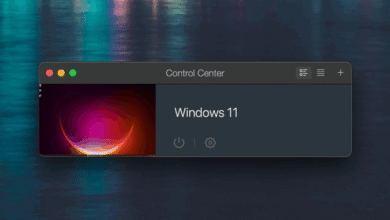End of an Era: Microsoft Bids Farewell to Infamous Blue Screen of Death!

The End of an Era: The Retirement of the Iconic Blue Screen of Death
The Blue Screen of Death (BSOD) has long been a defining feature of the Microsoft Windows operating system, serving both as a warning and a symbol of frustration for countless users over the years. The familiar blue screen adorned with ominous error messages has been something both feared and expected since its inception. However, as technology evolves, Microsoft has announced that it is retiring this iconic feature. This blog explores the significance, implications, and evolution of the BSOD as we bid farewell to this technological relic.
A Brief History of the Blue Screen of Death
First introduced in Windows 1.0 in 1985, the blue screen represented a critical system error, leading to a system crash. Over the years, it became a notorious feature for Windows users. The bright blue background and the stark white text announcing a stop error became an unwelcome sight for anyone experiencing issues with their computer. The BSOD wasn’t just an error message; it became a part of digital culture, spawning jokes, memes, and even its own section of internet folklore.
Throughout its history, the BSOD has gone through several iterations. With each new version of Windows, Microsoft refined and revised the appearance and messaging of the BSOD. In Windows 95, it was redesigned with additional details about the errors that caused the crash. Subsequent iterations incorporated more user-friendly messaging, attempting to guide the user through troubleshooting processes. The BSOD became synonymous with ‘system failure,’ highlighting the challenges associated with personal computing.
Why is Microsoft Retiring the BSOD?
The retirement of the BSOD reflects a broader shift in how Microsoft approaches system reliability and user experience. Advances in technology have enabled developers to create more robust systems that handle errors without crashing entirely. Consequently, the BSOD has become less frequent, leading Microsoft to consider its relevance in modern computing.
The decision to retire the BSOD is tied to several factors:
- Increased Stability: As operating systems have matured, they have become more resilient to software failures. Modern versions of Windows have implemented better error handling and recovery protocols, making the BSOD less relevant.
- User Experience Focus: Enhancing user experience is at the forefront of Microsoft’s mission. The company aims to provide a seamless experience, and eliminating sudden system failures aligns with that goal.
- Shift in Technological Paradigms: As cloud computing and remote services gain traction, the traditional notion of an operating system managing hardware directly is evolving. This change diminishes the necessity for a panic screen like the BSOD.
The Replacement: What Comes Next?
With the BSOD becoming a relic of the past, what can users expect in its place? Microsoft is poised to introduce updated error reporting systems that aim to guide users through problem-solving without the shock of a sudden crash screen. This shift represents a more proactive approach to system failures, where users are given actionable steps to diagnose issues in real-time.
One concept that is likely to emerge is a more visually integrated error handling process. When a critical error occurs, users may receive pop-up notifications or dialogue boxes that gracefully inform them of issues, allowing them to address problems without feeling overwhelmed or alarmed. This strategy not only comforts users but also provides them with the necessary tools to troubleshoot effectively.
The Cultural Impact of the BSOD
The BSOD has transcended its functional role as an error message to become a cultural phenomenon. From memes to references in movies and television shows, the BSOD has left its mark on popular culture. It symbolizes the challenges of technology in everyday life, illustrating the sometimes unpredictable relationship people have with their devices. Users have often shared their frustrations and humorous encounters with the BSOD on platforms like Twitter, Reddit, and various forums, creating a sense of community around their shared experiences.
In many ways, the BSOD has become a rite of passage for new computer users—navigating its ominous messages and learning to troubleshoot the problems it signified has forged a form of camaraderie among users. Moreover, the acknowledgment of this error screen became more than just an accepted inconvenience; it became an integral part of the Windows experience, often leading to jokes that highlighted users’ technological struggles.
Looking Towards the Future
As we say goodbye to the BSOD, we are not merely discarding a screen but embracing a new vision for operating systems. The retirement of the BSOD signals a commitment by Microsoft to prioritize user experience and reliability. The next generation of Windows is zeroing in on enhancing user engagement by delivering a more sophisticated and reassuring error management system. This change represents a significant cultural shift in how technology is perceived and experienced.
The evolution of operating systems will continue, but one thing remains certain: angst associated with the BSOD, the surprise of a sudden crash, and the collective sigh of hopelessness are but memories we will look back on with a sense of nostalgia. The BSOD served its purpose during an era defined by computer uncertainty, and as we move forward, we carry forward lessons learned from encountering those blue screens.
Final Thoughts
The retirement of the Blue Screen of Death marks the end of an era for Microsoft Windows. As users, we have journeyed through the challenges it presented and have shared tales of woe and triumph in its presence. With this significant shift, Microsoft is inviting us to embrace a future where technology feels less daunting and more user-centric. While the BSOD may be disappearing, the evolution of computing is just beginning, promising a more seamless and enjoyable experience for users worldwide.
Summary
- The Blue Screen of Death (BSOD) has been an iconic feature of Microsoft Windows since 1985.
- It served as both a warning and a symbol of frustration for users encountering system errors.
- Microsoft is retiring the BSOD due to increased system stability, focus on user experience, and evolving technology.
- The BSOD will be replaced with updated error reporting systems that aim to provide a smoother, less daunting experience.
- The BSOD’s cultural impact has resonated with users, becoming a symbol of the challenges of technology.
- As we move forward, we face a future in computing marked by reliability and user engagement.





